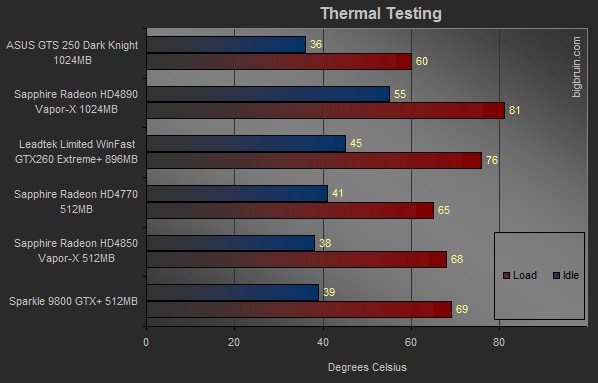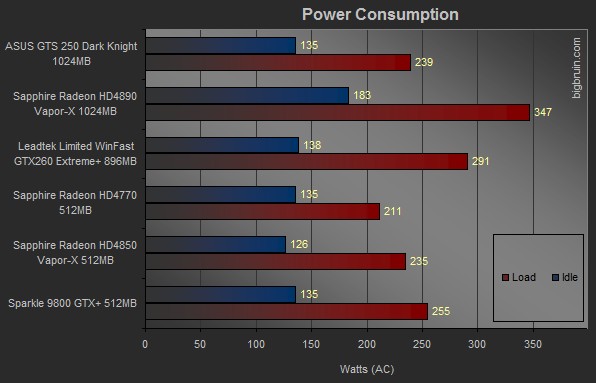Testing (continued):
Thermal Testing:
Thermal testing involved monitoring the various GPU temperatures by running GPU-Z with logging enabled. The idle condition was established by recording the temperature after leaving the system for 30 minutes with only GPU-Z running. The load condition was established by running 3DMark Vantage two times back-to-back, followed by two back-to-back sessions of the DirectX 9 version of a benchmark available for the Devil May Cry game. GPU-Z is capable of logging current, minimum, and maximum temperature, so once all testing was completed, the maximum temperature was recorded. All testing was completed on an open testbed with relatively still air in a room with an ambient temperature of 21C.

Here is where the GTS 250 really shines. The temperatures start out the lowest, and stay that way even under the load of some rather intense testing. The unique heatpipe cooler no only kept the GPU nice and cool, it did so with absolutely minimal noise. Other than passively cooled solutions, I don't think I have used a quieter video card in recent years.
The fan never surged in speed or noise, and this makes me see this card as a good choice for an HTPC. Too bad it doesn't have an integrated HDMI port to make it really appealing.
Power Consumption Testing:
Power consumption testing involved the use of a Seasonic Power Angel to monitor the AC Wattage drawn by the test system with each video card installed. Since all other hardware remained the same, any change in the Wattage would be the due to the demand of the graphics card. Idle conditions were established by letting the system sit at the Windows desktop until a stable reading was achieved, and for load testing the DirectX 9 version of the Devil May Cry benchmark was executed. Peak values were recorded from the Power Angel's display and recorded in the chart below.

At idle, the GTS 250 was electrically identical to the 9800 GTX+, with the system drawing 135W (AC). Under a load the GTS 250 was a bit more energy efficient, drawing 16W less. There is a definite improvement from one generation to the next, but a couple Radeon cards drew even less power while generally performing better.